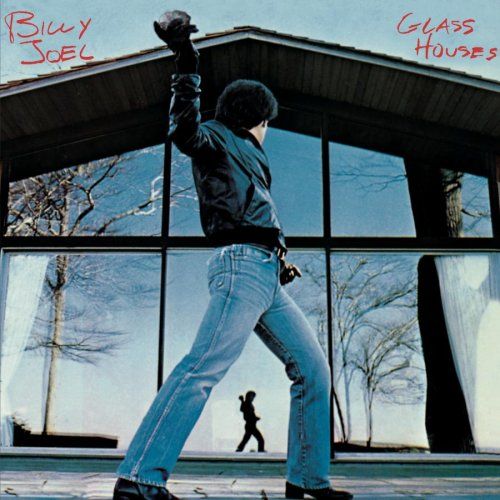
Glass Houses (1980)

1. You May Be Right
2. Sometimes a Fantasy
3. Don't Ask Me Why
4. It's Still Rock and Roll to Me
5. All For Leyna
6. I Don't Want to Be Alone
7. Sleeping with the Television On
8. C'Etait Toi (You Were the One)
9. Close to the Borderline
10.Through the Long Night
Following the sophisticated eclecticism of 52nd Street, Billy Joel shifted direction with Glass Houses, a leaner, more aggressive rock album that stood in stark contrast to the layered productions of his earlier work. Released in 1980, the album reflected broader shifts in the music industry. The ornate studio aesthetics of the late 1970s had begun to fall out of fashion, replaced by the stripped-down directness of punk and new wave. In this context, Joel’s decision to adopt a rawer sound was both timely and strategic.
The record opens with You May Be Right, a brash and defiant rocker that mirrors the confrontational energy of Big Shot, but with sharper execution and a more radio-friendly polish. It serves as a declaration of intent: Joel was not only capable of playing rock and roll—he could do so with conviction.
Sometimes a Fantasy continues in this vein, its offbeat narrative and pulsing rhythm showcasing Joel’s command of the uptempo form. Close to the Borderline, though lesser known, holds its own as a spirited, if under-recognized, contribution to the album’s hard-edged character.
Despite his aversion to being labeled as “soft rock,” Joel does not wholly abandon his melodic sensibilities. Tracks like Don’t Ask Me Why reveal a penchant for pop craftsmanship, merging an almost whimsical arrangement—complete with hints of Latin instrumentation—with a tightly structured, catchy lyricism. All for Leyna stands out as another highlight, its synth-heavy arrangement and lyrical urgency reflecting Joel’s willingness to experiment with then-contemporary trends without sacrificing his compositional identity.
The album’s most successful track, both artistically and commercially, is It’s Still Rock and Roll to Me. At once self-referential and culturally incisive, the song critiques the commodification of musical trends while asserting a purist’s allegiance to authenticity. In doing so, it also serves as a meta-commentary on Joel’s own evolving public image.
That said, Glass Houses is notably front-loaded. While the first half of the album is energetic and cohesive, the second half loses momentum. C’était Toi (You Were the One) and Through the Long Night attempt to reintroduce the tenderness typically found on Joel’s earlier records, but neither achieves the resonance or polish of his stronger ballads. Their inclusion feels more like a nod to form than a creative necessity.
Nevertheless, the album succeeds in reaffirming Joel’s versatility. It is not merely a stylistic detour but a fully committed pivot—executed without apology and largely without misstep. In the context of his career, Glass Houses stands as evidence that Joel could adapt to shifting musical climates without compromising his core identity. While he would never again pursue such a sustained rock aesthetic, the album remains a testament to both his ambition and his ability to deliver across a broad spectrum of sound.
Back To Main Page
Go To Next Review